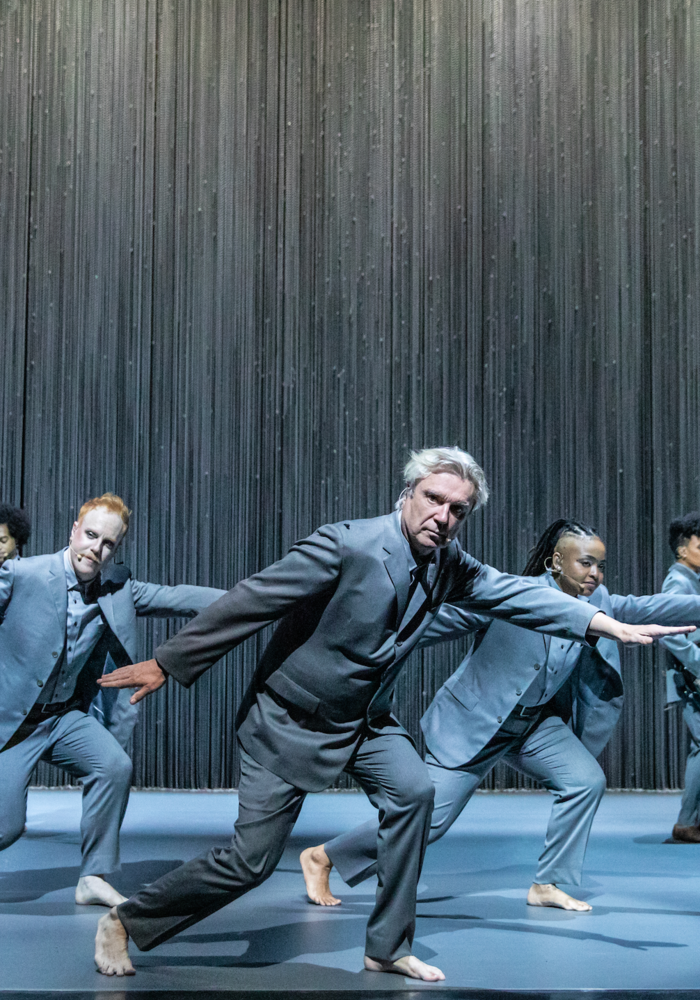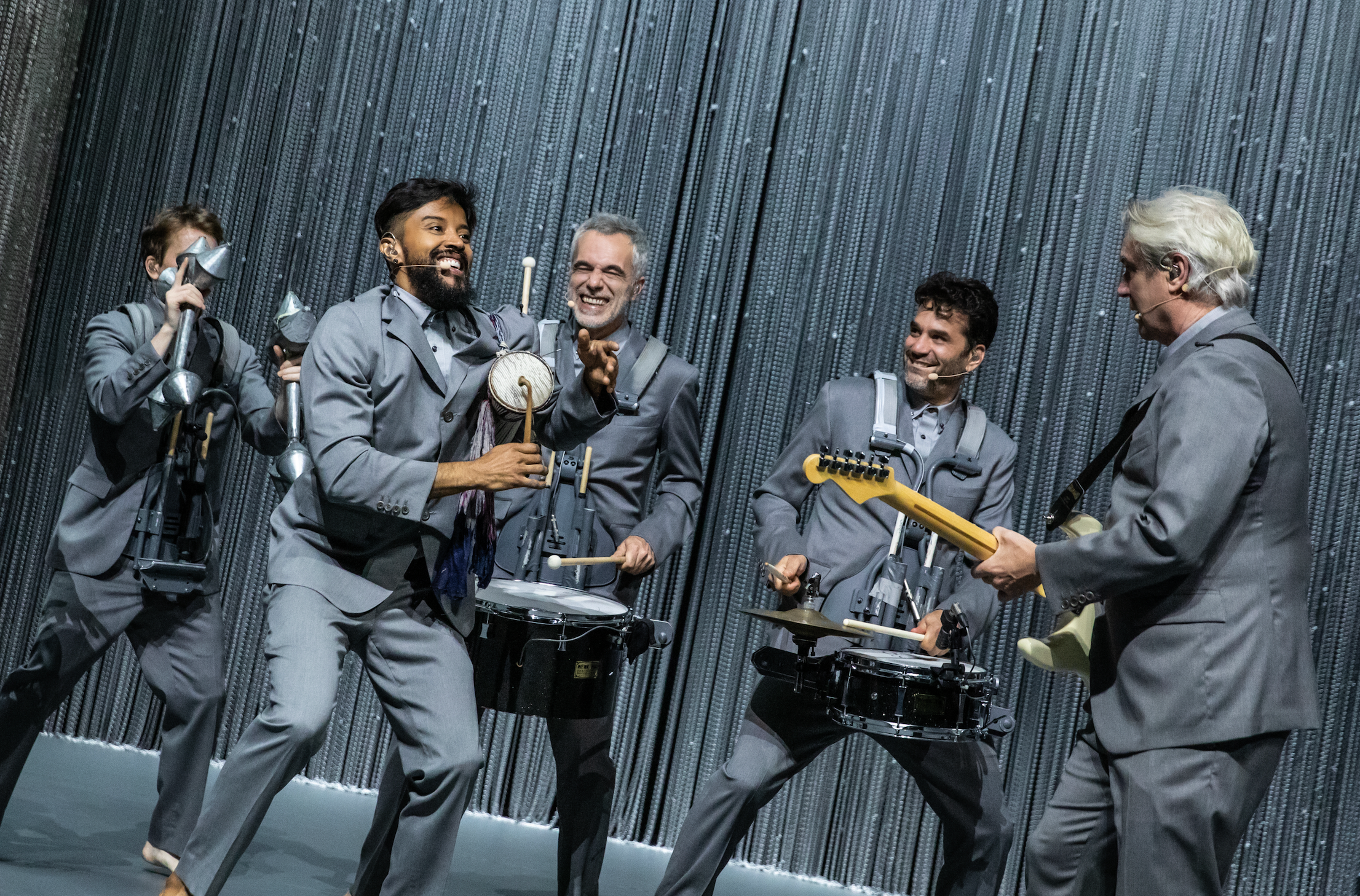David Byrne’s ground-breaking American Utopia show, which was the subject of a 2019 concert film directed by Spike Lee, has returned to Broadway with a Meyer System LEOPARD system at its core.
The show’s first outing at the Hudson Theatre ended its run in February 2020, with a second run at the larger St. James Theatre commencing in September 2021. For both productions, Meyer Sound LEOPARD line array loudspeakers were selected to anchor the main audio systems.
The concept for American Utopia sees no stage set, with all musicians moving freely and wireless across the stage throughout the show. As there is no isolated ‘pit’ band relying on click tracks and pre-records, all music is played live on the stage by an ensemble, including Byrne, of 12 musicians/vocalists, with six on percussion and all 12 on vocal mics.
Managing the mix was Pete Keppler, a veteran FOH engineer who came on board prior to the tour and mixed the shows at outdoor festivals and in venues clustered in the 3,000 to 5,000-seat range. When American Utopia moved to the 970-seat Hudson Theatre, he sought a loudspeaker system scaled to a new set of demands.
“There was essentially no room beside the proscenium, and the creative team was adamant that the arrays stay out of sight lines,” explained Keppler, who took on the dual role of sound designer and production sound mixer. “I needed a powerful system suited to rock levels but with a slender profile. I consulted with the crew at Sound Associates, and they recommended LEOPARD. I had heard LEOPARDs before as delays and in some smaller tour venues, and I liked them. I immediately agreed.”
The main hangs at the Hudson were left and right arrays of 12 LEOPARD line loudspeakers. “That was far more power than I needed, but I needed the array height to cover the vertical,” said Keppler.
The follow-up production at the 1,710-seat St. James Theatre was more complex, with the location of box seats requiring a split array configuration, with six LEOPARD loudspeakers on the lower hang and eight on the upper.
Six LEOPARD loudspeakers were set three per side as infills, with another 10 as balcony delays. Eight 900-LFC low-frequency control elements fill out deep bass, while five UPJ-1P and 11 UPJunior loudspeakers were deployed in fill and delay systems. Four Galileo Callisto processors provide system drive and optimization.


